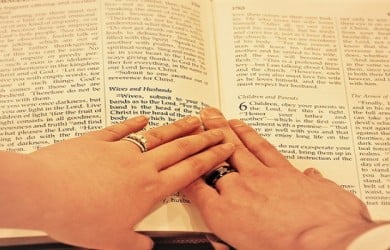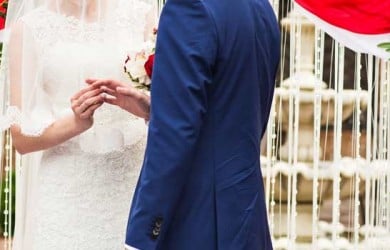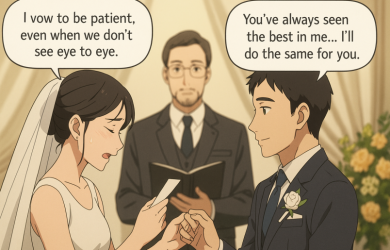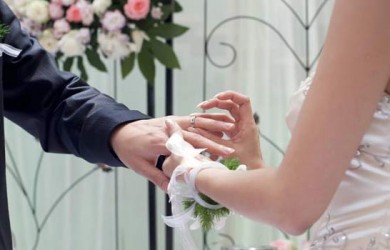8 Meaningful Jewish Marriage Vows and Rituals

Unlock Daily 30-Sec Tips for a Happier Relationship
👉 Subscribe FREEKey Takeaways
Marriage.com AI Quick Summary
The beauty of the relationship of a husband and wife as well as their obligations to each other and to their people are symbolized by an intricate series of rituals and traditions which are followed while taking Jewish wedding vows.
The wedding day is seen as one of the happiest and holiest days in the life of the bride and groom as their past is forgiven and they merge into a new and complete soul.
Traditionally, in order to heighten the excitement and anticipation, the happy couple do not see each other for one week prior to taking their traditional Jewish wedding vows.
Here are 8 amazing Jewish wedding vows and rituals that you should know about:
1. The fast
When the day arrives, the couple is treated like a king and queen. The bride is seated on a throne while the groom is surrounded by guests who are singing and toasting him.
To honor the auspiciousness of their wedding day some couples choose to hold a fast. Similar to Yom Kippur , the day of the wedding is also considered as a day for forgiveness. The fast is kept until after the final ceremonies of the wedding are complete.
2. Bedken
The next wedding tradition before the ceremony is called Bedken. During Bedken the groom approaches the bride and places a veil over her bride symbolizing modesty as well as his commitment to clothe and protect his wife.
Bedken also signifies that the love of the groom for his bride is for her inner beauty. The tradition of the groom veiling the bride himself stems from the Bible and ensures that the groom does not get tricked into marrying someone else.
3. Chuppah
The wedding ceremony then takes place under a canopy which is called the chuppah. A prayer shawl or tallit belonging to a member of the family is often used to make the canopy.
The covered roof and the four corners of the chuppah is a representation of the new home the couple will build together. The open sides represent Abraham and Sarah’s tent and their openness to hospitality.
In a traditional Jewish wedding rituals walk to the chuppah the groom is walked down the aisle by both his parents followed by the bride and both her parents.
4. Circling and the vows
Once they are under the chuppah, one of the Jewish marriage rituals for the wedding day is that the bride will circle around the groom either three or seven times. This is symbolic of building a new world together and the number seven represents wholeness and completion.
The circling represents the creation of a magical wall around the family to protect it from temptations and evil spirits.
The bride then settles besides the groom at his right hand side. This is followed by the rabbi reciting the betrothal blessings after which the couple drinks from the first of two cups of wine which are used during traditional Hebrew wedding vows or Jewish marriage vows.
The groom then takes a plain gold ring and places it on his bride’s forefinger of her right hand saying, “Behold, you are betrothed unto me with this ring, according to the law of Moses and Israel.” This is the central point of the ceremony when the marriage becomes official.
5. Ketubah
Now the marriage contract is read out and signed by two witnesses and then the seven blessings are recited while the second cup of wine is taken. The marriage contract also known as the Ketubah in Jewish is an agreement that entails the duties and responsibilities of the groom.
It cites the conditions that the groom and bride should fulfill and includes a framework if the couple decide to get divorced.
Ketubah is actually a Jewish civil law agreement and not a religious document, so the document has no mention of god or his blessings. Witnesses are also present during the signing of Ketubah and is later read in front of the guests.
6. Sheva B’rachot or seven blessings
Sheva B’rachot or the seven blessings are a form of ancient Jewish teachings that are read both in Hebrew and English by different friends and family members. The reading starts with small blessings which turn into grand celebratory statements.
7. Breaking of glass
The end of the ceremony is marked by the moment when a glass is placed on the floor inside a piece of cloth and the groom crushes it with his foot symbolizing the destruction of the temple in Jerusalem and identifying the couple with the destiny of their people.
Many couples even collect the shards of the broken glass and turn it into a memento of their wedding say. This marks the end of the Jewish vows and everyone shouts “Mazel Tov” (congratulations) as the newlyweds are given an enthusiastic reception.
8. Yichud
After the ceremony is over the couples spend approximately 18 minutes apart as a part of their yichud tradition. Yichud is a Jewish custom wherein a newlywed couple are given the opportunity to reflect on their relationship privately.
 Tips
Tips
Write your tip or submit a video tip
All tips are reviewed before the publishing.
Share this article on
Want to have a happier, healthier marriage?
If you feel disconnected or frustrated about the state of your marriage but want to avoid separation and/or divorce, the marriage.com course meant for married couples is an excellent resource to help you overcome the most challenging aspects of being married.
Recent Articles
Related Quizzes
Unlock Daily 30-Sec Tips for a Happier, Healthier Relationship
👉 Subscribe FREE on YouTube We'd love your feedback!
We'd love your feedback!
 Expert Q&A
Expert Q&A
Ask your question related to this topic & get the support you deserve from experts.



















 Thanks for your feedback!
Thanks for your feedback!